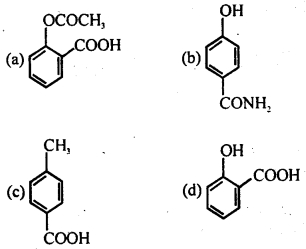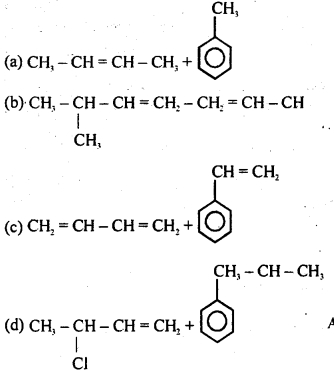CBSE Class 12 Biology – MCQ and Online Tests – Unit 2 – Sexual Reproduction in Flowering Plants
Every year CBSE conducts board exams for 12th standard. These exams are very competitive to all the students. So our website provides online tests for all the 12th subjects. These tests are also very effective and useful for those who preparing for competitive exams like NEET, JEE, CA etc. It can boost their preparation level and confidence level by attempting these chapter wise online tests.
These online tests are based on latest CBSE Class 12 syllabus. While attempting these our students can identify the weak lessons and continuously practice those lessons for attaining high marks. It also helps to revise the NCERT textbooks thoroughly.
CBSE Class 12 Biology – MCQ and Online Tests – Unit 2 – Sexual Reproduction in Flowering Plants
Question 1.
Normal Embryosac of Angiosperm is :
(a) Unicellular
(b) Bicelled
(c) Penta celled
(d) Seven called
Answer
Answer: (a) Unicellular
Question 2.
Development of fruit without fertilizations is:
(a) Parthenogenesis
(b) Heterostyly
(c) Parthenocarpy
(d) Agamospermy
Answer
Answer: (c) Parthenocarpy
Question 3.
Commonly in a mature fertilized ovule n, 2n, 3n conditions are respectively found in :
(a) Endosperm, nucellus and egg
(b) Egg. antipodals and endosperm
(c) Integuments, synergids and egg
(d) Egg, nucellus and endosperm
Answer
Answer: (d) Egg, nucellus and endosperm
Question 4.
Which structure is not found in Angiosperm?
(a) Archegonium
(b) Carpel
(c) Anther
(d) Magagametophyte
Answer
Answer: (a) Archegonium
Question 5.
Demerit of self pollinatlon is:
(a) Unisexua
(b) Dichoganty
(c) Hetorostyle
(d) None of these
Answer
Answer: (b) Dichoganty
Question 6.
After fertilization ovule develops into:
(a) Integument
(b) Seed
(c) Embryo
(d) Endosperm
Answer
Answer: (b) Seed
Question 7.
Totipotency is
(a) Development of a fruit from a flower in a medium
(b) Development of an organ from a cell in a medium
(c) Development of tissues of all kinds from a cell in a medium
(d) Development of tissues of all kinds from a cell in a medium
Answer
Answer: (c) Development of tissues of all kinds from a cell in a medium
Question 8.
Parthenogenesis is common in :
(a) Grape
(b) Mango
(c) Citrus
(d) Litchi
Answer
Answer: (a) Grape
Question 9.
In an ovule meiotic takes place in:
(a) Nucellus
(b) Megaspore mother cell
(c) Megaspore
(d) Archesporium
Answer
Answer: (b) Megaspore mother cell
Question 10.
All of the following structures are found in angiosperms except ?
(a) Archegonium
(b) Pistil
(c) Anther
(d) Megagametophyte
Answer
Answer: (a) Archegonium
Question 11.
In Capsella the endosperm in generally:
(a) Haploid
(b) Diploid
(c) Triploid
(d) Tetraploid
Answer
Answer: (c) Triploid
Question 12.
An orthrotropous ovule is one in which micropyle and chalaza are :
(a) Oblique to funiculus
(b) At right angles to funiculus
(c) In straight line with funiculus
(d) Parallel to funiculus
Answer
Answer: (c) In straight line with funiculus
Question 13.
Who proved that the cells are totipotent?
(a) White
(b) Skoog
(c) Miller
(d) Steward
Answer
Answer: (d) Steward
Question 14.
Fatheroflndian Angiosperm Embnology is:
(a) B. M. John
(b) B. G L. Swami
(c) R.N. Kapil
(d) P. Maheshwari
Answer
Answer: (d) P. Maheshwari
Question 15.
Polymbryony occurs in:
(a) Maize
(b) Citrus
(c) Corchorus
(d) Carthamus
Answer
Answer: (b) Citrus
Question 16.
In Monocots, grafting is almost impossible because they lack :
(a) Cambium
(b) Ground tissue
(c) Vascular bundle
(d) Parenchymatous cells
Answer
Answer: (a) Cambium
Question 17.
A typical angiospermic embryo sac is usually:
(a) One-celled
(b) Two-celled
(c) Five-celled
(d) seven-celled
Answer
Answer: (d) seven-celled
Question 18.
Double fertilization in angiosperms was discovered by:
(a) Strassburger
(b) J. C. Bose
(c) Maheshwari
(d) Nawaschin
Answer
Answer: (d) Nawaschin
Question 19.
Closed flower:
(a) Decliny
(b) Cteistogamy
(c) Dichogamy
(d) None of these
Answer
Answer: (b) Cteistogamy
Question 20.
Maturation of male and female sex organs at different times is known as:
(a) Herkogamy
(b) Dichogamy
(c) Polygamy
(d) Apogamy
Answer
Answer: (a) Herkogamy
Question 21.
If cotyledons are brought above the soil the germination is:
(a) Hypogeal
(b) Epigeal
(c) Vivipaiy
(d) None of these
Answer
Answer: (b) Epigeal
Question 22.
How many meiotic divisions are necessary to produce 100 pollen grains ?
(a) 100
(b) 50
(c) 25
(d) 20
Answer
Answer: (c) 25
Question 23.
Pollination in Lotus is:
(a) By water
(b) By wind
(c) By insect
(d) All of these
Answer
Answer: (a) By water
Question 24.
Double fertilization means:
(a) Fusion of two eggs
(b) Fusion of egg and pollen nuder of two pollen grains
(c) Fusion of two polar nuclei with one male gamete
(d) Fusion between synergid cells and male gamete
Answer
Answer: (c) Fusion of two polar nuclei with one male gamete
Question 25.
Pollination by snails is called:
(a) Malecophily
(b) Zoophily
(c) Anemophily
(d) Hydrophily
Answer
Answer: (a) Malecophily
Question 26.
When pollen tube enter into the nucellus through micropyle is called:
(a) Porogamy
(b) Xenogamy
(c) Mesogamy
(d) Dikogamy
Answer
Answer: (a) Porogamy
Question 27.
Who discovered fertilization?
(a) Nawaschin
(b) Strassburger
(c) Leeuwen Hock
(d) Robert Hook
Answer
Answer: (b) Strassburger
Question 28.
Pollination by bats is called:
(a) omithophily
(b) Entromophily
(c) Cheiropterophily
(d) Hydrophily
Answer
Answer: (a) omithophily
Question 29.
Haploid plants develop by pollen are called ……..
(a) Emasculation
(b) Parthenocarpy
(c) androgenesis
(d) somatic hybridization
Answer
Answer: (d) somatic hybridization
Question 30.
When more than one embryoper embryosac is found. It is called:
(a) Embryogeny
(b) Amphimisis
(c) Agamospormy
(d) Polyembryoni
Answer
Answer: (d) Polyembryoni
















